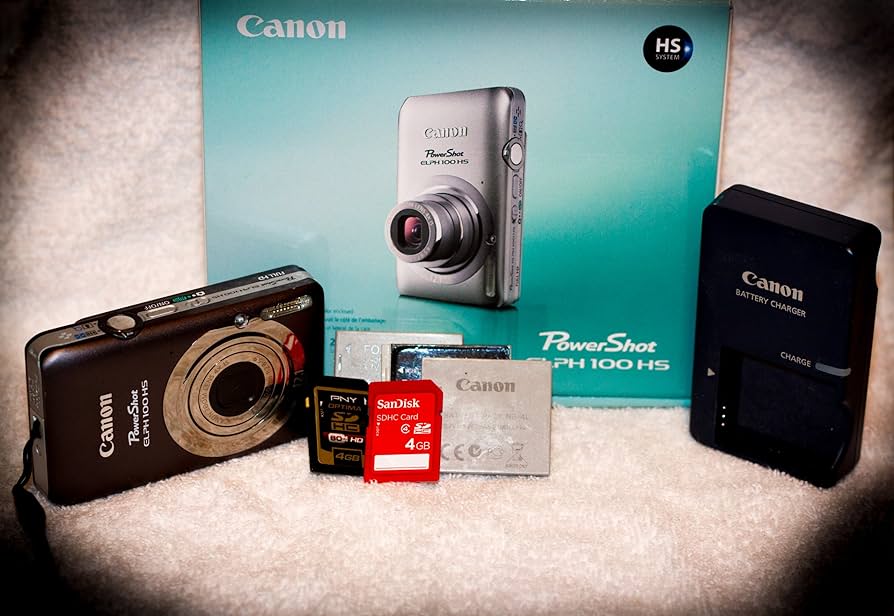Film cameras can be detrimental to the environment due to their use of chemicals in film processing. Traditional film photography requires materials that are not eco-friendly.
Film cameras, once at the pinnacle of photographic technology, are now symbols of a nostalgic era. These devices operate with film rolls that demand a process ridden with chemical development, often involving toxic substances like silver and various other solvents.
As digital photography has become the norm, the environmental impact of film cameras has gained attention. Detailed considerations include the consequences of mining the metals for camera components and the disposal of used film and photographic chemicals. While film cameras contribute to environmental harm, they hold a cultural and artistic value that persists in modern photography. Understanding their impact is crucial for avid photographers and environmentalists alike.
Film Photography’s Renaissance
Old things can become new again. Film cameras have their charm. People love their unique look. Pictures feel different. More personal. Magic happens in the darkroom. Film photography is back. It’s not just about nostalgia. It’s an art form reborn. Creatives and enthusiasts are picking up film rolls.
The Resurgence Of Analog
Film cameras are making a comeback. Digital is everywhere. But still, analog wins hearts. Film isn’t just for old times. It’s for now. Young photographers love it. They enjoy waiting for photos to develop. This wait is special. It teaches patience. And the thrill of finally seeing your photo? Priceless.
- You can feel the photo.
- Each click of the shutter counts.
- Mistakes can turn into beautiful surprises.
Impact On Modern Visuals
Film changes how we see images. It has a style. One that’s hard to copy. Digital photos are perfect. Maybe too perfect. Film is different. It has flaws. But these flaws make it special.
Look at modern movies. Some have a film-like look. It’s no accident. Film has texture. It has a feel. That’s why it’s back. People want that classic look. Even phone apps try to copy it. They add filters. But it’s not the same. Real film grain is unique.
| Feature | Film | Digital |
|---|---|---|
| Texture | Unique grain | Smooth |
| Color | Rich, deep | Bright, vivid |
| Process | Developing time | Instant results |
Film isn’t just old technology. It’s a lifelong passion. It brings warmth to photos. That’s hard to find in today’s fast digital age. The tactile experience of film is unmatched. This is the essence of the film photography renaissance.
Components Of Film Cameras
Understanding the components of film cameras helps us see their impact on the planet. Film cameras consist of various parts. Each part plays a role in picture quality. Let’s dive into what makes up these cameras and consider the environment.
Chemical Constituents
Film photography uses chemicals. These chemicals develop pictures. Here’s a list of common chemicals in film processing:
- Developer – Turns invisible image to visible.
- Fixer – Makes image permanent on film.
- Stop Bath – Stops development process.
These chemicals can harm the environment. They must be disposed of properly. This prevents pollution.
Materials In Manufacturing
Cameras are made from various materials. Here are the key ones:
| Material | Use |
|---|---|
| Plastic | Body, buttons |
| Metal | Gears, screws |
| Glass | Lens elements |
Some materials are not eco-friendly. They require a lot of energy to create. When thrown away, they can take centuries to decompose.
Production Impact On The Environment
Exploring the distinct facets of analog photography, it’s essential to discuss the Production Impact on the Environment. Film cameras, once a household staple, now prompt environmental concerns. Let’s delve into the production stages that affect our planet’s health.
Factory Emissions
The journey of a film camera begins in a factory. Here, manufacturing emits various pollutants. Greenhouse gases release into the atmosphere, contributing to global warming. Facilities might also emit harmful compounds affecting air quality. It is vital to measure and minimize these emissions for a cleaner environment.
Resource Extraction And Waste
Film cameras rely on numerous materials for construction. The extraction of these materials involves intensive mining activities, which can lead to:
- Soil erosion
- Water contamination
- Destruction of habitats
Moreover, waste products from camera manufacturing can be considerable. Factories may produce:
| Waste Type | Environmental Impact |
|---|---|
| Chemical runoff | Harms aquatic life |
| Scrap metal | Increase in landfill mass |
| Plastic components | Long-term soil and water pollution |
Recycling initiatives and responsible waste management are crucial steps towards reducing these detrimental effects. Companies need to value sustainability in their production models.
Film Processing Concerns
As photography enthusiasts dust off vintage cameras, one pressing question emerges: are film cameras bad for the environment? The process of developing film, from the darkroom to your photo album, has raised environmental eyebrows. Let’s zoom into the impact film processing has on Mother Earth.
Toxic Chemicals In Development
Traditional film development relies on a cocktail of chemicals. These substances give life to images but can also harm natural habitats. Two key players stand out:
- Silver halides – crucial for capturing images on film.
- Developer solutions and fixers – transform latent images into visible pictures.
These chemicals, especially when disposed of improperly, pose a threat to ecosystems. They can potentially poison waterways and soil. The environmental footprint is significant, urging the photography community to seek greener pastures.
Water Usage And Contamination
Film development is thirsty work. It consumes large quantities of water. The cycle of rinse and repeat sweeps chemicals into our water systems. Here’s how the process unfolds:
| Stage | Water Use |
|---|---|
| Development | Multiple rinses needed |
| Stop Bath | Halts the development |
| Fixing | Additional washing required |
Each step can lead to the potential release of toxic substances into water sources. Moreover, the sheer volume of water used raises sustainability issues. The quest for environmentally friendly film processing methods continues to be an essential topic for discussion within the photography community. With the right practices, the hope is to minimize the ecological footprint left behind by our artistic pursuits.
Disposal And Recycling Challenges
Disposal and Recycling Challenges. While film photography has a nostalgic charm, it raises environmental concerns. Disposing of and recycling film cameras is not straightforward. These challenges create hurdles for sustainability efforts.
Electronic Waste Issues
Film cameras contribute to electronic waste (or e-waste). After their lifecycle, many digital components inside cannot break down naturally. This fact leads to a growing pile of electronic items that harm the environment.
- Batteries and circuit boards pollute landfills.
- Heavy metals leak into the ground.
- Potential recovery of precious materials gets ignored.
Recycling Complexities
Recycling film cameras poses unique challenges. Many elements within these devices, like metals and plastics, must undergo separate recycling processes. Specialized facilities are needed for this task.
| Component | Recycling Difficulty | Environmental Impact |
|---|---|---|
| Plastics | High | Non-biodegradable waste |
| Metals | Medium | Toxic Leaks |
| Glass | Low | Energy Consumption |
| Chemicals | High | Soil and Water Pollution |
Moreover, the chemicals used in film development are toxic. They pose disposal problems. Proper recycling prevents these chemicals from damaging ecosystems.
Credit: product-selection.grundfos.com
Digital Vs. Analog Environmental Footprint
When discussing photography’s environmental impact, a key question pops up: Is digital or analog photography more eco-friendly? Both methods have unique footprints on the environment. It’s essential to examine how film and digital cameras operate, last, and get replaced over time. Let’s break down each aspect.
Operational Energy Consumption
Energy use is critical when comparing film to digital cameras. Digital devices depend on electricity for charging batteries, powering displays, and storing images. In contrast, analog cameras require no power for snapping pictures. They need energy mainly for developing film. Here’s a quick look at energy usage:
- Digital cameras: Regular charging and connection to devices for image transfer.
- Film cameras: Minimal during operation, but film developing processes consume chemicals and water.
Digital cameras seem energy-intensive due to constant battery use, which leads to more frequent electricity consumption.
Lifespan And Obsolescence
Lifespan matters when weighing environmental impacts. Digital cameras often become obsolete as technology advances. Users might discard these in favor of newer models, contributing to electronic waste. In contrast, film cameras boast a longer lifespan by nature—many old film cameras remain functional after decades. Check out the lifespan differences:
| Camera Type | Lifespan | Obsolescence Rate |
|---|---|---|
| Digital Cameras | Shorter due to tech advancements | Faster, often replaced within years |
| Film Cameras | Potentially decades with care | Slower, less need to upgrade |
Considering these points, film cameras appear more sustainable if reused and maintained properly, adding less to the global e-waste problem.
Sustainable Practices In Photography
Photography captures life’s beauty. Yet, traditional film can harm our planet. It’s time to focus on sustainable practices in photography. This means finding ways to take pictures that protect our Earth. In this post, we’ll explore eco-friendly film options. We’ll also cover green processing techniques. These methods help photographers care for the environment.
Eco-friendly Film Alternatives
Film photography doesn’t have to hurt nature. There are films made with fewer chemicals. Some films even use recycled materials. Here are some options:
- Recycled Film: Made from recycled plastic, reducing waste.
- Non-Toxic Films: They don’t have harmful chemicals.
- Biodegradable Film Canisters: These canisters break down over time.
Choose films that say ‘eco-friendly’ or ‘non-toxic’. This small change makes a big difference for Earth.
Green Processing Techniques
Developing film usually involves chemicals. These can damage nature. However, green methods exist:
| Technique | Description |
|---|---|
| Use of Natural Developers | Some plants can develop photos. Coffee and tea are two popular options. |
| Digital Scanning | Scan negatives instead of printing photos. This reduces chemical use. |
| Recycled Water Systems | Reuse water when processing films. This conserves this precious resource. |
Photographers should embrace these techniques. They help keep our Earth healthy.

Credit: bigeyeagency.com
The Future Of Eco-friendly Film Photography
The Future of Eco-Friendly Film Photography shines with innovations. Users recognise the charm of film, but with a green twist. Brands are now going green. They tweak old methods. They invent new, clean ones. Film is timeless. It’s becoming nature’s friend.
Innovative Materials
Biodegradable films are emerging. Companies create films from plant-based materials. These disintegrate naturally. No harm comes to the earth. Traditional plastic reels get replaced. Some use recycled materials. All start leaving smaller footprints.
Industry Shifts Towards Sustainability
The industry takes bold steps. Old processes see major overhauls. Chemical management improves. Use of non-toxic substances becomes widespread. Recycling is common. Film cartridges come from recycled parts. Paper envelopes also get reused. Every part of the cycle is examined. It is enhanced.

Credit: www.edmunds.com
Frequently Asked Questions Of Are Film Cameras Bad For The Environment
Do Film Cameras Contribute To Pollution?
Film cameras themselves have minimal impact on pollution. However, the production and disposal of film and chemicals used in developing can be environmentally harmful. Proper disposal and recycling efforts can mitigate this effect.
Are Digital Cameras More Eco-friendly Than Film?
Digital cameras avoid the need for film and chemical processing, reducing potential environmental harm. They offer a more sustainable option with fewer consumables and less waste, as images are stored electronically.
How To Dispose Of Old Film Cameras Responsibly?
To dispose of old film cameras responsibly, consider donating to charities or educational institutions. Alternatively, recycle through electronics recycling programs to prevent harmful substances from reaching landfills.
Can Film Photography Be Sustainable?
Film photography can be sustainable with mindful practices. Use film sparingly, develop selectively, and choose eco-friendly developing methods. Also, support manufacturers committed to environmental responsibility.
Conclusion
The environmental impact of film photography can’t be ignored. Opting for digital methods reduces chemical waste and conserves resources. Let’s innovate responsibly, embracing the nostalgia of film while prioritizing our planet’s health. Together, we can create a sustainable future for photography that honours both artistry and ecology.


